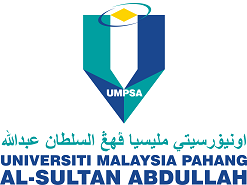Integrating Lean Principles in Fire Safety Engineering for Private Al-Quran Memorization (Tahfiz) School Buildings: A Conceptual Framework
DOI:
https://doi.org/10.15282/construction.v5i1.11929Keywords:
Fire Safety Engineering, Lean Construction Principles, Prevention through Design, Private Tahfiz SchoolAbstract
The adoption of lean principles and the establishment of a lean culture are continuing trends in both construction and post-construction buildings. This paper will examine how lean principles and fire safety management practices are integrated into the design, supply, construction, occupation, refurbishment, and demolition phases of the Private Al-Quran Memorization (Tahfiz) School (PTS). A deadly fire at Pusat Tahfiz Darul Quran Ittifaqiyah, a religious school in Kampung Datuk Keramat, in 2017, and other fire incidents that caused heightened attention on safety in these institutions led to the start of this study. This poses a significant challenge that requires immediate attention to the infrastructure and fire prevention systems of PTS. It is important to effectively implement fire safety measures to protect people, school buildings, and property from the catastrophic effects of fire. To address this issue, Lean Principles are being adopted in fire safety management, with a focus on the performance of the PTS infrastructure as a prevention approach. Lean Principles are commonly used in Lean Manufacturing, Lean Design, Lean Construction, and Lean Maintenance, and have been widely accepted by professionals worldwide. Prevention through Design (PtD) can be initiated as a general prevention principle, with various Lean Tools implemented throughout the PTS building lifecycle, including designing, construction, occupying, demolishing, and modification processes. Despite the integration of Lean Principles into fire safety engineering is yet to be studied and introduced effectively, the framework has potential benefit in developing legislation, rules, guidelines, and good practise in the government/regulatory body that could enhance the fire prevention system in the PTS.
Downloads
References
[1] N. T. Misbahrudin and A. H. Mohd. Nor, “A framework to analyze the efficiency of Private Tahfiz in Malaysia. Journal of Islamic Philanthropy & Social Finance, vol. 4, no. 1, pp. 30–36, 2022.
[2] M. I. Samadi, D. Widiantari, and A. Hashim, “Strengthening the Tahfiz study system in the era of the industrial revolution 4.0: Directions and challenges in Malaysia,” Religion Education, vol. 2, no. 1, pp. 34-44, 2022.
[3] N. H. Hamzah, N. A. Ali, N. A. Kamri, M. Y. Mohd Yusoff, and N. N. Abdul Rahman, “Empowering Tahfiz education in Malaysia: Insights into the external factors driving parental preferences,” Asia Pacific Journal of Educators and Education, vol. 39, no. 2, pp. 5–37, 2024.
[4] Ministry of Housing and Local Government of Malaysia, “Uniform Building By-Laws 1984,” Federal Subsidiary Legislation. [Online] https://jkt.kpkt.gov.my/wp-content/d/sites/default/files/2022-10/UKBS%201984%201C.pdf
[5] R. Chand, “Framework for identifying research gaps for future academic research,” IRA International Journal of Education and Multidisciplinary Studies, vol. 19, no. 2, pp. 160, 2023.
[6] M. D. Fetters and C. Tajima, “Mixed methods research designs,” In International Encyclopaedia of Education (Fourth Edition), pp. 426–440, 2022.
[7] H. M. Yusoff, P. P. Heng, M. R. H. Illias, S. Karrupayah, M. A. Fadhli, and R. Hod, “A qualitative exploration and a Fuzzy Delphi validation of high-risk scaffolding tasks and fatigue-related safety behavioural deviation among scaffolders,” Heliyon, vol. 10, no. 15, p. e34599, 2024.
[8] M. G. O’Sullivan, “Quantitative and qualitative affective methods for reformulation,” In Salt, Fat and Sugar Reduction: Sensory Approaches for Nutritional Reformulation of Foods and Beverages, Woodhead Publishing Series in Food Science, Technology and Nutrition, pp. 167-182, 2020.
[9] M. Nind, A. Kaley, and E. Hall, “Focus Group Method,” In Handbook of Social Inclusion, Springer, Cham, pp. 1-21, 2021.
[10] M. Gundumogula, “Importance of focus groups in qualitative research,” The International Journal of Humanities & Social Studies, vol. 8, no. 11, pp. 299-302, 2020.
[11] United Nations Economic Commission for Europe, “International Fire Safety Standards: Common Principles Safe Buildings Save Lives,” International Fire Safety Standards Coalition, Geneva, October 2020.
[12] I. S. Dragone, C. N. Biotto, and S. M. B. Serra, “Evaluation of lean principles in building maintenance management,” In Proceeding of 29th Annual Conference of the International Group for Lean Construction (IGLC), pp. 13-22, 2021.
[13] R. F. Aziz and S. M. Hafez, “Applying lean thinking in construction and performance improvement,” Alexandria Engineering Journal, vol. 52, no. 2013, pp. 679-695, 2013.
[14] The British Standards Institution, BS 7974:2001, Application of fire safety engineering principles to the design of buildings - Code of practice. [Online] https://landingpage.bsigroup.com/LandingPage/Series?UPI=PD%207974
[15] M. A. Hassanain, M. Aljuhani, M. B. Hamida, and M. H. Salaheldin, “A framework for fire safety management in school facilities,” International Journal of Built Environment and Sustainability, vol. 9, no. 2, pp. 1-9, 2022.
[16] W. Węgrzyński and P. Sulik, “The philosophy of fire safety engineering in the shaping of civil engineering development,” Bulletin of The Polish Academy of Sciences-Technical Sciences, vol. 64, pp. 719-730, 2016.
[17] Department of Occupational Safety and Health, Ministry of Human Resources Malaysia. Guidelines on Occupational Safety and Health in the Construction Industry (Management), 2017.
[18] M. A. Hassanain, “Fire safety in the design and operation of student housing facilities,” Structural Survey, vol 26, no. 1, pp. 55-62, 2008.
[19] M. A. Marhani, N. A. A. Bari, K. Ahmad, and A. Jaapar, “The implementation of lean construction tools in Malaysia,” Chemical Engineering Transactions, vol. 63, pp. 289-294, 2018.
[20] A. Irajpour, A. Fallahian-Najafabadi, M. A. Mahbod, and M. Karimi, “A framework to determine the effectiveness of maintenance strategies lean thinking approach,” Mathematical Problems in Engineering, vol. 2014, pp. 1-11, 2014.
[21] M. Isobe, D. Helbing, and T. Nagatani, “Many-particle simulation of the evacuation process from a room without visibility,” arXiv preprint cond-mat/0306136, 2003.
[22] K. Pooley, S. Nunez, and M. Whybro, “Evidence-based practices of effective fire safety education programming for children,” Australian Journal of Emergency Management, vol. 36, no. 2, pp. 34-41, 2021.
[23] M. A. Hassanain, “Towards the design and operation of fire safe school facilities,” Disaster Prevention and Management, vol. 15, pp. 838-846, 2006.
Downloads
Published
Issue
Section
License
Copyright (c) 2025 The Author(s)

This work is licensed under a Creative Commons Attribution-NonCommercial 4.0 International License.




